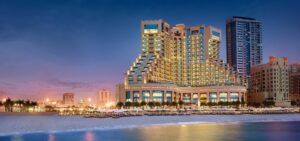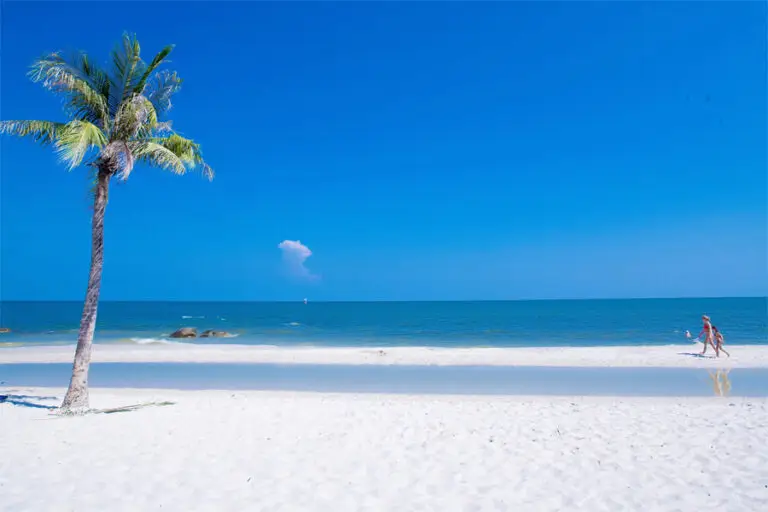PREFER TO WAtch this article as a video ?
Cebu: The Queen City of the South
Cebu, often referred to as the “Queen City of the South,” is an island province in the Philippines, known for its rich history, vibrant culture, and stunning natural beauty.

1. Overview:
Geography and Location:
Cebu is both an island and a province located in the Central Visayas region of the Philippines. Comprising the main island and 167 surrounding islands and islets, Cebu is the country’s oldest city and the first Spanish settlement.
Historical Significance:
Cebu is often dubbed as the “Cradle of Christianity” in the Far East. It was in Cebu where Ferdinand Magellan, the Portuguese explorer, first set foot in the Philippines in 1521. He planted the cross, which is now a revered relic housed in Magellan’s Cross, symbolizing the birth of Christianity in the country.
Cultural Melting Pot:
Cebu is a blend of indigenous and foreign influences. Its history of trading and colonization has left a rich tapestry of traditions and cultures, from native animist practices to Spanish Catholic traditions, and even influences from Chinese and Arab traders.
Economic Hub:
Cebu City, the province’s capital, is the second-largest city in the Philippines after Manila. It’s a significant center for commerce, education, industry, and trade in the Visayas region. The Mactan-Cebu International Airport serves as a major gateway for tourists, making Cebu a hub for travel and business.
Natural Beauty:
Beyond its bustling urban areas, Cebu boasts a diverse range of natural attractions. From the white sandy beaches of Bantayan and Malapascua islands to the mountainous terrains of the south, the province offers a variety of landscapes and seascapes that cater to all types of adventurers.
Language and People:
The Cebuanos are known for their warmth and hospitality. Cebuano or Bisaya is the primary language spoken, but most locals are fluent in both Filipino and English, making communication easy for tourists.
2. Top Attractions:
Magellan’s Cross:
- Location: Magallanes Street, Cebu City
- Description: This large wooden cross is housed in a chapel next to the Basilica Minore del Santo Niño. It is believed that the original cross planted by Magellan is encased within the wooden cross to protect it from deterioration. The ceiling of the chapel is adorned with a beautiful mural depicting the scene of Magellan’s landing and the first Christian baptism in the Philippines.
- Significance: The cross symbolizes the introduction of Christianity to the Philippines and the beginning of over 300 years of Spanish colonization.
Basilica Minore del Santo Niño:
- Location: Osmena Boulevard, Cebu City
- Description: This historic basilica, with its stunning façade and intricate interiors, stands as a testament to Cebu’s deep-rooted Christian faith. The church is built on the spot where the image of the Santo Niño was found during the expedition of Miguel Lopez de Legazpi.
- Significance: The church is a pilgrimage site for many Filipinos, who come to pay homage to the Santo Niño, considered the oldest religious relic in the Philippines. Every year, the Sinulog Festival is celebrated in honor of the Santo Niño.
Fort San Pedro:
- Location: A. Pigafetta Street, Cebu City
- Description: This triangular-shaped fort, with its thick walls and watchtowers, is the oldest and smallest Spanish fort in the Philippines. Inside the fort, you’ll find a lush garden, a museum showcasing Cebu’s history, and artifacts from the Spanish era.
- Significance: The fort served as a military defense structure against Muslim raiders and pirates. It also played a significant role during the Philippine Revolution and World War II.
Taoist Temple:
- Location: Beverly Hills Subdivision, Cebu City
- Description: Built in 1972, the Taoist Temple is a multi-tiered, multi-colored attraction accessible by three separate winding routes. The temple is adorned with dragon sculptures, pagodas, and a replica of the Great Wall of China. Visitors can also perform rituals, such as the “prayer of wish,” where one can throw wooden blocks to seek answers from the gods.
- Significance: The temple is a symbol of the strong Chinese influence in Cebu and serves as a place of worship for the Taoist community. Its elevated location offers a panoramic view of Cebu City and the neighboring islands.
Each of these attractions not only offers a glimpse into Cebu’s rich history and diverse culture but also provides unique experiences that captivate both locals and tourists alike.
Culinary Heritage:
Cebu takes pride in its culinary scene. From the famous Cebu lechon (roasted pig) that has been praised by many international chefs to the street food that offers a taste of everyday Cebuano life, the province is a gastronomic adventure waiting to be explored.
3. Natural Wonders:
Kawasan Falls:
- Location: Badian, Cebu
- Description: Kawasan Falls is a serene and majestic cascade of fresh turquoise water from mountain springs. The falls consist of three levels, with the first being the largest and most popular. Natural lagoons and pools are formed, perfect for a refreshing swim.
- Activities: Apart from swimming, visitors can embark on canyoneering adventures, starting from the upstream river and culminating at the falls. The journey involves trekking, cliff jumping, and swimming through canyons.
Oslob Whale Shark Watching:
- Location: Oslob, Cebu
- Description: Oslob offers a unique opportunity for tourists to swim alongside the whale sharks, the largest fish in the sea. These gentle giants are filter-feeders and are harmless to humans.
- Activities: Tourists can snorkel or dive to observe the whale sharks in their natural habitat. It’s essential to follow guidelines to ensure the safety and well-being of both the whale sharks and the visitors.
Moalboal:
- Location: Southwest of Cebu Island
- Description: Moalboal is a coastal town known for its vibrant marine life. The most famous attraction is the sardine run, where millions of sardines form a swirling ball just a few meters from the shore.
- Activities: Diving and snorkeling are the primary activities in Moalboal. Apart from the sardine run, divers can explore the beautiful coral reefs, caverns, and see turtles, dolphins, and a variety of fish species.
4. Festivals:
Sinulog Festival:
- Location: Cebu City
- Description: The Sinulog Festival is a cultural and religious celebration that commemorates the Filipino people’s conversion to Christianity and honors the Santo Niño, or the child Jesus. The festival is marked by a grand parade with participants dressed in colorful costumes dancing to the rhythm of drums and trumpets.
- Significance: The dance ritual is a reenactment of the time when the native Filipinos embraced Christianity. The word “Sinulog” is derived from the Cebuano word “sulog,” which means “like water current movement,” describing the dance’s forward-backward movement.
- Activities: Apart from the grand parade, there are various events like the Sinulog Queen competition, street parties, fireworks displays, and religious processions. The festival culminates with a grand fireworks display.
Both the natural wonders and the festivals of Cebu showcase the island’s rich biodiversity and vibrant culture, making it a must-visit destination for travelers seeking both adventure and cultural immersion.
5. Culinary Delights:
Lechon:
- Description: Lechon is a whole pig roasted over an open flame or in an oven until its skin becomes crispy and golden brown. The meat inside is tender, juicy, and infused with a mix of spices and herbs.
- Serving: Often served with a side of liver sauce or vinegar dip. In Cebu, the lechon is known for its distinct flavor, often not requiring any sauce due to its savory taste.
- Occasion: It’s a staple during celebrations and special occasions.
Danggit:
- Description: Danggit is a type of salted dried fish, specifically a rabbitfish or spinefoot. It’s sun-dried until crisp.
- Serving: Best enjoyed when fried to a crisp and paired with garlic rice and a sunny-side-up egg. It’s a popular Filipino breakfast dish.
- Variety: Apart from the traditional danggit, there are also versions marinated in vinegar and garlic.
Puso (Hanging Rice):
- Description: Puso is rice wrapped and boiled in diamond-shaped containers made from woven coconut leaves. The weaving pattern allows the rice to be cooked evenly.
- Serving: It’s a perfect pairing with grilled dishes, especially during beach outings or street food adventures.
- Significance: Puso is not just a method of cooking rice but also a representation of Cebuano ingenuity and culture.
6. Travel Tips:
Language:
- Cebuano Phrases: While most locals understand Filipino and English, it’s appreciated when visitors know basic Cebuano phrases like “Salamat” (Thank you), “Maayong Buntag” (Good Morning), and “Unsa ni?” (How much is this?).
Transportation:
- Jeepneys: These are colorful, elongated vehicles that serve as a communal mode of transportation. They have specific routes and are an affordable way to get around.
- Tricycles and Habal-Habal: In rural areas or smaller towns, tricycles (motorcycles with sidecars) and habal-habal (motorcycles) are common.
- Ferries: For island hopping or traveling between neighboring islands, ferries and boats are available.
Weather:
- Rainy Season: June to November. Expect intermittent rains and occasional typhoons.
- Dry Season: December to May. This is the ideal time for beach outings and outdoor activities. However, it’s also the peak tourist season, so expect higher prices and crowded spots.
- Packing Tip: Lightweight clothing is recommended. Don’t forget sunscreen, hats, and sunglasses for protection against the tropical sun.
7. Shopping:
Carbon Market:
- Location: Downtown Cebu City
- Description: Carbon Market is the heartbeat of Cebu’s local trade. Named after a nearby coal depot, it’s a bustling maze of stalls selling everything from fresh produce, seafood, and poultry to handicrafts, textiles, and household items.
- Unique Finds: Look out for local delicacies, traditional Filipino snacks, and handmade crafts that make for perfect souvenirs.
- Tips: It’s best to visit early in the morning when the produce is freshest. Don’t forget to haggle; bargaining is part of the market experience!
Ayala Center Cebu:
- Location: Cebu Business Park, Cebu City
- Description: Ayala Center Cebu is a modern shopping haven, offering a mix of high-end and local brands. The mall’s architecture seamlessly blends indoor and outdoor spaces, making shopping a leisurely experience.
- Facilities: Apart from a wide array of shops, the mall boasts cinemas, a food court, fine dining restaurants, and recreational areas. Regular events, such as concerts and exhibits, also take place here.
- Tips: If you’re looking for local products in a more upscale setting, check out the mall’s “Island Souvenirs” for quality Cebuano crafts.
8. Nearby Destinations:
Mactan Island:
- Location: Adjacent to Cebu Island, connected by the Marcelo Fernan Bridge and the Mactan-Mandaue Bridge.
- Description: Mactan is a coral island that’s a hub for beach resorts and water activities. It’s also the location of the Mactan-Cebu International Airport.
- Activities: Dive into the island’s clear waters and explore its vibrant marine life. Snorkeling, jet-skiing, and island hopping are popular activities. Don’t miss the Lapu-Lapu Shrine, dedicated to the native chieftain who resisted Spanish colonization.
Bantayan Island:
- Location: Northern tip of Cebu
- Description: Bantayan is a paradise for beach lovers. With its powdery white sands, crystal-clear waters, and swaying coconut trees, the island exudes a serene and laid-back atmosphere.
- Activities: Relax on the beach, take a dip in the turquoise waters, or explore the island’s local villages. The island is also known for its Holy Week celebrations, where locals engage in unique traditions.
- Tips: While the island is a bit of a journey from Cebu City, the trip is worth it for those seeking tranquility away from the crowds.
9. Accommodation:
Luxury Hotels:
- Description: Cebu boasts several five-star hotels that offer world-class amenities, including spas, infinity pools, gourmet restaurants, and stunning views of the sea or city.
- Examples: Shangri-La’s Mactan Resort and Spa, Radisson Blu Cebu, and Marco Polo Plaza Cebu.
- Tips: These hotels often have promotional packages, especially during off-peak seasons. It’s worth checking their official websites or contacting them directly for the best deals.
Mid-Range Hotels:
- Description: For travelers who desire comfort without the hefty price tag, there are numerous mid-range hotels that provide excellent facilities and services.
- Examples: Quest Hotel & Conference Center, Harolds Hotel, and Bayfront Hotel Cebu.
- Tips: Many of these hotels are strategically located near shopping malls or tourist attractions, making them convenient bases for exploration.
Budget-Friendly Hostels and Guesthouses:
- Description: Ideal for backpackers and solo travelers, these accommodations offer basic amenities and often foster a communal atmosphere.
- Examples: Le Village Hostel Cebu, Mad Monkey Hostel Cebu City, and Sugbutel Family Hotel.
- Tips: Hostels often have shared dormitory-style rooms, but many also offer private rooms for those wanting more privacy. It’s a great way to meet fellow travelers and exchange travel tips.
Local Homestays:
- Description: Experience authentic Cebuano hospitality by staying with a local family. It’s a unique opportunity to immerse oneself in the local culture.
- Tips: Websites like Airbnb have listings for local homestays. Ensure to read reviews and communicate with hosts before booking.
10. Safety:
General Safety:
- Cebu, like many tourist destinations, is generally safe. The locals are friendly and often go out of their way to assist tourists.
- Petty crimes like pickpocketing can occur, especially in crowded areas like markets or during festivals. It’s essential to be aware of your belongings.
Travel Tips:
- Avoid flaunting expensive jewelry or gadgets, especially in busy streets or public transportation.
- It’s advisable to avoid poorly lit areas or wandering alone late at night, especially in unfamiliar territories.
- When taking a taxi, ensure the meter is running or agree on a fare beforehand to avoid disputes.
Emergency Contacts:
- Familiarize yourself with local emergency numbers. For police assistance in Cebu, dial 166 or 117.
- Many hotels and resorts have in-house security and can assist with any safety concerns or provide local safety advice.
Health Precautions:
- Drink bottled water and avoid consuming street food that doesn’t look fresh or isn’t cooked properly.
- Ensure you have travel insurance that covers medical emergencies.
Remember, while Cebu is generally safe, being vigilant and informed will ensure a hassle-free and enjoyable trip.
Conclusion:
Cebu, with its rich tapestry of history, culture, and natural beauty, beckons travelers from all corners of the globe. From its bustling markets and modern shopping centers to the serene beaches of nearby islands, Cebu offers a diverse range of experiences that cater to all types of travelers.
Whether you’re indulging in the island’s culinary delights, diving into its vibrant marine life, or simply soaking in the warmth of Cebuano hospitality, there’s no doubt that Cebu leaves an indelible mark on every visitor’s heart.
As with any destination, being informed and taking necessary precautions ensures a memorable and safe journey. So pack your bags, set your sights on this gem in the Philippines, and let Cebu’s charm enchant you.









